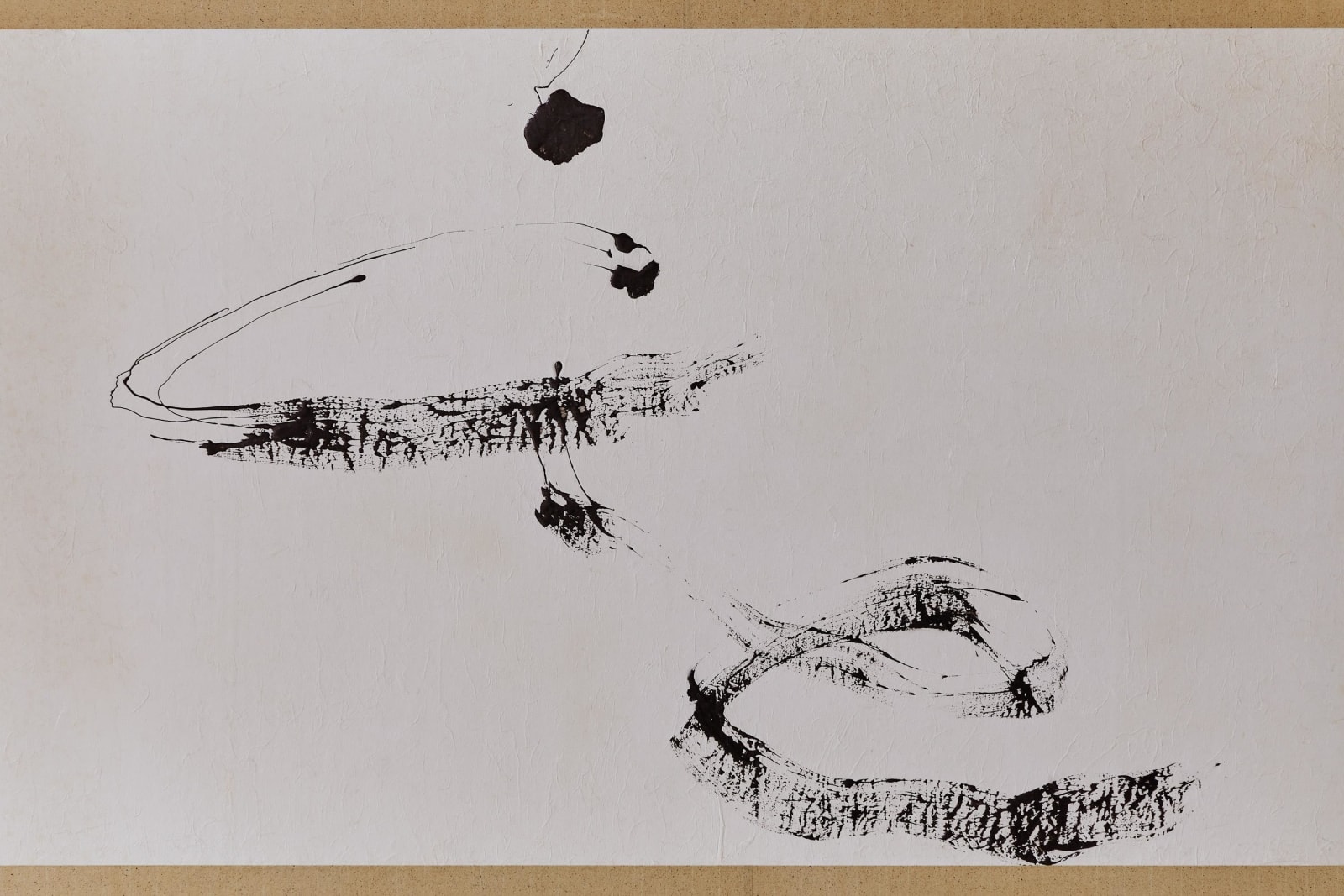Morita Shiryū (1912–1998)
Kan
Ink on paper, framed
1961
With a label signed by the artist
93 x 181 cm
104 x 193 cm (overall)
1961
With a label signed by the artist
93 x 181 cm
104 x 193 cm (overall)
Exhibitions
Meaning and Symbol. Traveling exhibition throughout Germany, 1962.Literature
Bokubi. 121. Kyoto: Bokubisha, 1962. Bokujin sakuhinshu. Kyoto: Bokujinkai, 1962. The Works of Shiryu Morita: Selected by the Artist. Kyoto: Bokubisha, 1971. Morita Shiryu Catalogue Raisonné: 1952–1998. Uji: Soryusha, 2019.
A reoccurring theme in Morita’s choices of Chinese characters was to express one’s inner self by means of calligraphy. Kan, according to the artist, means to “return to the original source.” To be more specific, the “original source” denotes a supreme state of mu (nothingness) that transcends the five human senses of sight, smell, hearing, taste, and touch. Intellectual knowledge, the ability to emotional response, and determination of one’s will can be acquired later in life through education whereas according to Zen belief the state of mu is inherent to human nature. Morita always took the stance that it was one’s inner self, or a state of mu, rather than any external stimuli through the interactions with others, that made themselves unique and therefore had to be valued higher.
There is a total of sixteen different known versions of the character kan in Morita’s oeuvre. The present one counts among the earliest of there, dated 1961 on a label signed by the artist on the reverse. Around that time, Morita became more interested in Europe and would participate in several exhibitions of Japanese avant-garde calligraphy there. The present work was one of the exhibits of Sinn und Zeichen: Kalligraphien Japanischer Meister (Symbol and Meaning: Masters of Japanese Calligraphy) in Darmstadt, Germany, and other cities of Germany, in 1961.
Morita Shiryu (avant-garde calligrapher; 1912–1998)
Avant-garde calligrapher from Hyogo Prefecture. Like fellow artist Inoue Yuichi, Morita studied under the calligraphy master Ueda Sokyu. He co-founded the avant-garde group Bokujinkai together with Inoue and was the founder and editor of the journal Bokubi (Beauty of Ink), both of which revolutionized traditional Japanese calligraphy and spread knowledge of Japanese avant-garde calligraphy to an international audience. He was posthumously awarded the Medal of Honor with Dark Blue Ribbon.
There is a total of sixteen different known versions of the character kan in Morita’s oeuvre. The present one counts among the earliest of there, dated 1961 on a label signed by the artist on the reverse. Around that time, Morita became more interested in Europe and would participate in several exhibitions of Japanese avant-garde calligraphy there. The present work was one of the exhibits of Sinn und Zeichen: Kalligraphien Japanischer Meister (Symbol and Meaning: Masters of Japanese Calligraphy) in Darmstadt, Germany, and other cities of Germany, in 1961.
Morita Shiryu (avant-garde calligrapher; 1912–1998)
Avant-garde calligrapher from Hyogo Prefecture. Like fellow artist Inoue Yuichi, Morita studied under the calligraphy master Ueda Sokyu. He co-founded the avant-garde group Bokujinkai together with Inoue and was the founder and editor of the journal Bokubi (Beauty of Ink), both of which revolutionized traditional Japanese calligraphy and spread knowledge of Japanese avant-garde calligraphy to an international audience. He was posthumously awarded the Medal of Honor with Dark Blue Ribbon.



